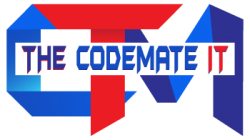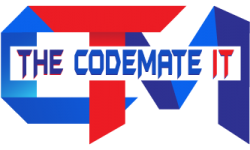When it comes to managing I.T. in business, service credibility is essential for lasting operational success. Credibility is earned when the end-user community accepts that the I.T. department is capable, interested, invested and equipped to deliver. So how is credibility earned? It takes the right skills, common sense standards, and a willingness to embrace all the key challenges.
What is I.T. Management?
As a management discipline, I.T. management is defined by the practices, policies and procedures used to manage the selection, implementation, usage and maintenance of all types of information technology in all types of business environments. In practice, I.T. management is both a business function and an organizational imperative. We have all come to know that technology is critical to many, if not all, business operations. That puts a double burden on the average I.T. shop. First, technology has to work and be utilized. Then, technology has to make a difference – it has to serve a purpose and it has to add value.
And that’s where the challenge begins. As a business practice, I.T. management is more than “installing and maintaining technology” (which is already pretty important) – it’s also about using technology in a way that both “supports and transforms”. And, in the real world, no I.T. department can serve both goals without sufficient credibility. In fact, I.T. managers must consistently demonstrate that they not only have sufficient technical expertise, but that they also know the “business”, how it works, and what it needs (now and in the future). And that level of credibility depends on the right combination of executable service strategy skills and service strategy standards.
I.T. Managers Wear Many Hats
It takes a diverse portfolio of management skills and abilities to build lasting I.T. credibility (and related management success). While I.T. management skills begin with subject matter expertise (“the technology”), I.T. managers and professionals must also have solid understanding of general management and business operations practices. That’s where the “hats” come in.
In fact, there’s at least seven (7) “hats” required to make technology work, keep it running, deliver successful projects, manage the “business of managing I.T.”, market I.T. services, initiatives and projects, strive for I.T./business alignment, and to advise on all strategic technology matters.This takes multiple skills, starting with the “top 12” listed below:
Top (12) “Soft Skills” Essential to I.T. Credibility
- I.T. managers must prioritize work requests according to needs and capabilities.
- I.T. managers must handle complaints without getting defensive (to have a thick skin).
- I.T. managers must communicate effectively (verbally and in writing).
- I.T. managers must recognize and learn from mistakes (and own up to them). Also See: Common Management Mistakes and How to Avoid Them.
- I.T. managers must “read” people, situations and to know how to respond accordingly.
- I.T. managers must be open to reasonable, calculated risk. Also See: Are You Ready for a Risky Project?
- I.T. managers must delegate work responsibilities as appropriate. Also See: How to Delegate With Minimal Risk
- I.T. managers must anticipate objections and pre-empt problems.
- I.T. managers must make every end-user feel “important” and well served.
- I.T. managers must keep an open mind and stay away from the “not invented here” syndrome.
- I.T. managers must display a willingness to act (and avoid analysis paralysis). Also See: Recognizing and Avoiding Analysis Paralysis.
- I.T. managers must avoid the tendency to micro-manage as an instinctive means of just getting things done.
What’s the Purpose of I.T. Management Standards?
We all know that work is easier, and success is more likely, when you can manage with a “roadmap” rather than a blank slate. Pre-defined I.T. management standards provide that roadmap, giving you tested practices and procedures to guide planning actions and decisions. Standards set a baseline for how projects are managed and services are delivered, saving time, improving quality and lowering costs.
But simply having “standards” is not enough. They have to be the “right” standards for your needs. The “right” standards will always be sufficiently actionable, realistic, relevant, and above all, flexible, and they must address the “big 4” management demands (strategic planning, problem management, policy development and projects). These are the areas where purpose, proficiency and productivity are most needed and can have the most significant impact.


